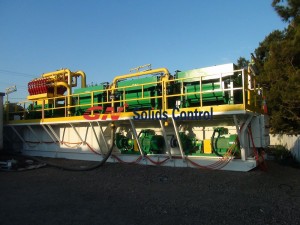Coal Bed Methane (CBM) is natural gas contained primarily (about 90% -100%) of methane (CH4) found in coal seams. Methane is also the major component in petroleum natural gas (about 70% – 90%) that is widely used today. CBM is generated from the microbiological process or thermal process in the coal seam and recognized as one of the cleanest fossil fuels. Indonesia has one of the largest CBM reserves in the world with a potential 453 trillion cubic feet (“Tcf”), more than double the country’s natural gas reserves. The South Sumatra Basin, the largest CBM basin in Indonesia, is estimated to contain in-place resources of approximately 183 Tcf; and the Kutai Basin, the third largest CBM basin in Indonesia, is estimated to contain in-place resources of approximately 80 Tcf (SPE, 2004).

GN has exported many sets of mud tank system to Indonesia for CBM project. The technique to exploit CBM is different with that applied to the fossil natural gas, while both share the common in terms of marketing and utilization. Simply, CBM is exploited by drilling shallow wells into coal seams, dewatering the seams, extracting the methane from the seams and finally compressing the methane.
When design the CBM mud tank system, you should consider the following points:
1 shale shaker inlet method, usually the CBM well is lower than oil drilling well, maybe they will not use overhead manifold, but they have a mud pit and a submersible slurry pump to shale shaker.
2 fine particles, CBM drilling may contain much fine particles, most of clients will use high speed centrifuge.
3 Mud tank height, it should be a little lower than oil well drilling mud tank system.



